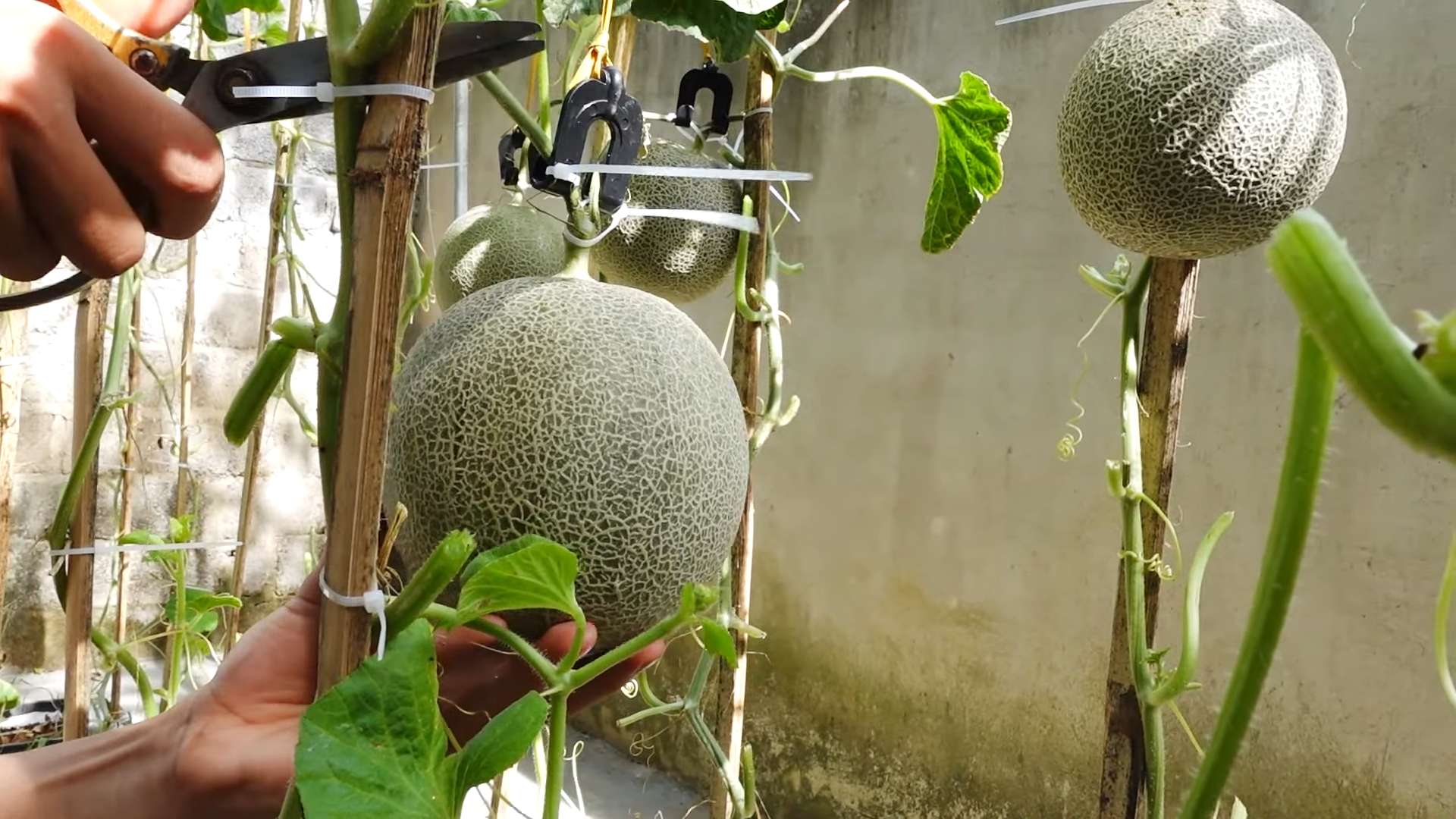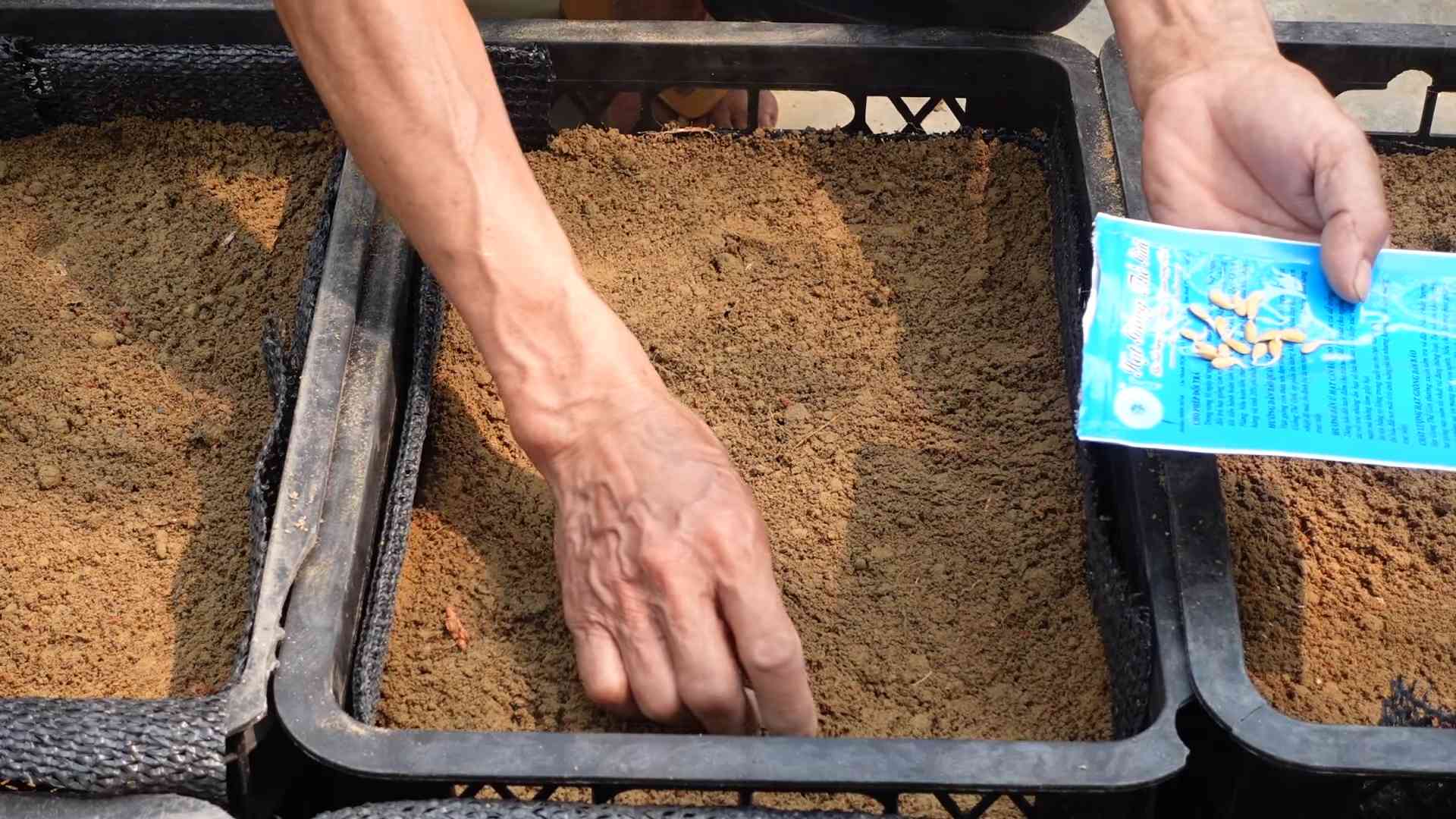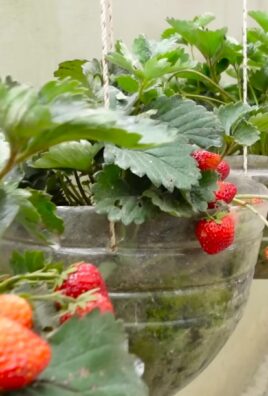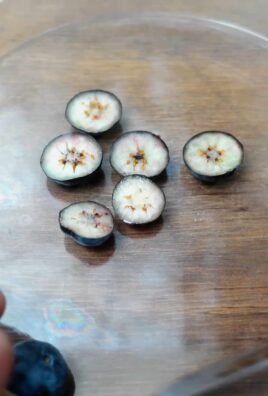Grow cantaloupes at home? Absolutely! Imagine biting into a juicy, sweet cantaloupe that you nurtured from seed to fruit, right in your own backyard. Forget those bland, store-bought melons – we’re talking about a flavor explosion that only comes from homegrown goodness.
For centuries, cantaloupes have been cherished for their refreshing taste and nutritional benefits. Originating in Africa and India, these delightful melons made their way across the globe, becoming a summertime staple in gardens and kitchens worldwide. But did you know that growing your own cantaloupes is easier than you think?
Many people shy away from growing cantaloupes, believing they require vast amounts of space or expert gardening skills. But I’m here to tell you that’s simply not true! With a few clever tricks and DIY hacks, you can successfully grow cantaloupes at home, even if you have limited space or are a beginner gardener. This article will equip you with the knowledge and techniques to cultivate these delicious melons, ensuring a bountiful harvest and a taste of summer sweetness right at your fingertips. So, let’s ditch the grocery store cantaloupes and embark on this exciting gardening adventure together!

Growing Cantaloupes: A Sweet Treat From Your Own Backyard
Okay, let’s talk cantaloupes! I know, I know, they seem like a summer treat best left to the professionals, but trust me, growing your own cantaloupes is totally doable, and the flavor of a homegrown melon is just unbeatable. I’m going to walk you through everything you need to know to have a successful cantaloupe harvest right in your own backyard (or even in containers!).
Choosing the Right Cantaloupe Variety
Before we even get our hands dirty, let’s talk varieties. Not all cantaloupes are created equal, and some are definitely better suited for home gardens than others. Here are a few of my favorites:
* ‘Athena’: This is a classic choice, known for its disease resistance and reliable yields. It’s a good all-around option for beginners.
* ‘Ambrosia’: If you’re looking for super sweet, this is your melon. It’s got a beautiful orange flesh and a fantastic aroma.
* ‘Minnesota Midget’: Perfect for smaller gardens or containers, this variety produces smaller melons (about 3-4 pounds) that ripen quickly.
* ‘Hales Best Jumbo: An heirloom variety that is known for its sweetness and flavor.
Preparing Your Garden for Cantaloupe Success
Cantaloupes are sun-loving, heat-craving plants, so location is key. Here’s what they need:
* Sunlight: At least 6-8 hours of direct sunlight per day. The more, the better!
* Soil: Well-draining soil that’s rich in organic matter. Cantaloupes don’t like soggy feet!
* Warmth: Cantaloupes need warm temperatures to thrive. Soil temperatures should be at least 60°F (15°C) before planting.
* Space: These vines can spread, so give them plenty of room. Each plant needs about 2-3 feet of space.
Amending Your Soil
Before planting, I always amend my soil with plenty of compost. This helps improve drainage, adds nutrients, and provides a good foundation for healthy growth. Here’s how I do it:
1. Clear the area: Remove any weeds, rocks, or debris from the planting area.
2. Spread the compost: Spread a 2-3 inch layer of compost over the soil surface.
3. Incorporate the compost: Use a garden fork or tiller to mix the compost into the top 6-8 inches of soil.
4. Test your soil pH: Cantaloupes prefer a soil pH between 6.0 and 6.8. If your soil is too acidic, add lime. If it’s too alkaline, add sulfur. You can buy a soil testing kit at most garden centers.
Starting Your Cantaloupe Seeds
You have two options here: direct sowing or starting seeds indoors. I usually prefer starting seeds indoors because it gives me a head start on the growing season, especially since I live in an area with shorter summers.
Starting Seeds Indoors
1. Timing is everything: Start your seeds about 3-4 weeks before the last expected frost in your area.
2. Choose your containers: Use seed starting trays or small pots filled with seed starting mix.
3. Sow the seeds: Plant 2-3 seeds per cell or pot, about ½ inch deep.
4. Water gently: Water the soil gently to moisten it, but don’t overwater.
5. Provide warmth and light: Place the trays or pots in a warm location (around 70-75°F or 21-24°C) and provide plenty of light. A heat mat can help speed up germination. If you don’t have a sunny window, use grow lights.
6. Thin the seedlings: Once the seedlings emerge and have a few true leaves, thin them to one strong seedling per cell or pot.
Direct Sowing
If you live in a warmer climate with a long growing season, you can direct sow your cantaloupe seeds directly into the garden.
1. Wait for warm soil: Make sure the soil temperature is at least 60°F (15°C) before planting.
2. Prepare the soil: Prepare the soil as described above, amending it with compost.
3. Sow the seeds: Plant 2-3 seeds per hill, about ½ inch deep. Space the hills about 2-3 feet apart.
4. Water gently: Water the soil gently to moisten it.
5. Thin the seedlings: Once the seedlings emerge and have a few true leaves, thin them to one strong seedling per hill.
Transplanting Your Cantaloupe Seedlings
Once the danger of frost has passed and your seedlings have a few true leaves, it’s time to transplant them into the garden.
1. Harden off the seedlings: Before transplanting, you need to harden off the seedlings. This means gradually exposing them to outdoor conditions over a period of about a week. Start by placing them outside in a sheltered location for a few hours each day, gradually increasing the amount of time they spend outdoors.
2. Prepare the planting holes: Dig holes that are slightly larger than the root balls of the seedlings. Space the holes about 2-3 feet apart.
3. Transplant the seedlings: Gently remove the seedlings from their containers and place them in the planting holes.
4. Backfill with soil: Backfill the holes with soil, gently firming it around the seedlings.
5. Water thoroughly: Water the seedlings thoroughly after transplanting.
Caring for Your Cantaloupe Plants
Once your cantaloupe plants are in the ground, it’s important to provide them with the care they need to thrive.
* Watering: Water deeply and regularly, especially during hot, dry weather. Aim for about 1-2 inches of water per week. Avoid overhead watering, as this can promote fungal diseases. Drip irrigation is a great option.
* Fertilizing: Fertilize your cantaloupe plants every 2-3 weeks with a balanced fertilizer. You can also side-dress them with compost.
* Weeding: Keep the area around your cantaloupe plants free of weeds. Weeds compete with the plants for water and nutrients.
* Mulching: Mulch around your cantaloupe plants with straw or hay to help retain moisture, suppress weeds, and keep the soil cool.
* Pest and disease control: Keep an eye out for pests and diseases. Common cantaloupe pests include aphids, squash bugs, and cucumber beetles. Common diseases include powdery mildew and fusarium wilt. Treat any problems promptly with appropriate organic or chemical controls.
Training Your Cantaloupe Vines
Cantaloupe vines can spread quite a bit, so you may want to train them to grow in a specific direction. You can use trellises or stakes to support the vines. This can also help improve air circulation and reduce the risk of fungal diseases.
Pollination
Cantaloupes are pollinated by bees and other insects. If you’re not seeing a lot of bee activity in your garden, you may need to hand-pollinate the flowers.
1. Identify the male and female flowers: Male flowers have a long, thin stem, while female flowers have a small, immature fruit at the base of the flower.
2. Pollinate the flowers: Use a small paintbrush to collect pollen from the male flower and transfer it to the female flower.
3. Repeat the process: Repeat the process every day until the female flowers start to develop into fruits.
Harvesting Your Cantaloupes
This is the moment we’ve all been waiting for! Knowing when to harvest your cantaloupes is crucial for getting that perfect, sweet flavor. Here’s what to look for:
* Color: The skin of the cantaloupe should turn from green to a tan or yellowish color.
* Aroma: The cantaloupe should have a sweet, musky aroma.
* Stem: The stem should easily slip from the vine with a gentle tug. This is called “slipping.” If you have to force the stem, the cantaloupe is not ripe yet.
* Sound: When you tap the cantaloupe, it should sound hollow.
Once your cantaloupe is ripe, cut it from the vine with a sharp knife.
Storing Your Cantaloupes
Store your ripe cantaloupes in the refrigerator for up to a week. Once you cut into a cantaloupe, wrap the cut side tightly with plastic wrap and store it in the refrigerator.
Troubleshooting Common Cantaloupe Problems
Even with the best care, you might encounter some problems while growing cantaloupes. Here are a few common issues

Conclusion
So, there you have it! Growing cantaloupes at home, while it might seem daunting at first, is an incredibly rewarding experience that brings the sweet taste of summer right to your backyard. Forget those bland, mass-produced melons from the grocery store. With a little planning, patience, and the right techniques, you can cultivate cantaloupes bursting with flavor and unparalleled freshness.
Why is this DIY trick a must-try? Because it empowers you to control the entire process, from seed to table. You know exactly what goes into your cantaloupes – no mystery chemicals or questionable practices. Plus, the satisfaction of harvesting a melon you nurtured yourself is simply unmatched. It’s a connection to nature, a lesson in sustainability, and a delicious treat all rolled into one.
But the benefits don’t stop there. Growing your own cantaloupes allows you to experiment with different varieties. Want a smaller, sweeter melon? Try a ‘Sugar Cube’ cantaloupe. Prefer a larger, more traditional variety? ‘Hales Best Jumbo’ might be your perfect match. The possibilities are endless!
Consider these variations to personalize your cantaloupe-growing journey:
* **Vertical Gardening:** If you’re short on space, train your cantaloupe vines to grow vertically on a trellis. This not only saves space but also improves air circulation, reducing the risk of fungal diseases.
* **Companion Planting:** Plant basil, marigolds, or nasturtiums near your cantaloupes to deter pests and attract beneficial insects. These companion plants can also enhance the flavor of your melons.
* **Container Gardening:** For those with limited garden space, cantaloupes can be successfully grown in large containers. Just ensure the container is at least 24 inches in diameter and provides adequate drainage. Choose a bush variety for best results.
* **Hydroponics:** For the adventurous gardener, hydroponic cantaloupe cultivation offers a controlled environment and potentially faster growth rates.
Don’t be afraid to experiment with different soil amendments, watering techniques, and pruning methods to find what works best for your specific climate and growing conditions. Remember, gardening is a learning process, and every season brings new opportunities to refine your skills.
We wholeheartedly encourage you to embark on this cantaloupe-growing adventure. It’s a project that offers both tangible rewards (delicious melons!) and intangible benefits (stress relief, connection to nature, and a sense of accomplishment).
So, grab your seeds, prepare your soil, and get ready to experience the joy of growing your own cantaloupes. And most importantly, we want to hear about your experiences! Share your photos, tips, and challenges in the comments below. Let’s create a community of cantaloupe enthusiasts and learn from each other’s successes and failures. Happy gardening!
Frequently Asked Questions (FAQ)
What is the best time to start cantaloupe seeds?
The ideal time to start cantaloupe seeds depends on your local climate and growing season. In general, you should start seeds indoors about 3-4 weeks before the last expected frost. Cantaloupes are warm-weather crops and are sensitive to frost, so it’s crucial to wait until the soil has warmed up to at least 60°F (15°C) before transplanting them outdoors. If you live in a warmer climate with a longer growing season, you can directly sow seeds into the garden after the last frost. Check your local weather forecasts and planting guides for specific recommendations for your area.
How much sunlight do cantaloupes need?
Cantaloupes require at least 6-8 hours of direct sunlight per day to thrive. Choose a planting location that receives full sun throughout the day. Insufficient sunlight can result in smaller, less flavorful melons and increased susceptibility to diseases. If you live in a particularly hot climate, some afternoon shade may be beneficial to prevent the plants from overheating.
What type of soil is best for growing cantaloupes?
Cantaloupes prefer well-drained, fertile soil with a pH between 6.0 and 6.8. Amend your soil with compost or other organic matter to improve drainage and fertility. Avoid heavy clay soils, as they can retain too much moisture and lead to root rot. A slightly sandy loam soil is ideal for cantaloupe cultivation. Before planting, consider conducting a soil test to determine the pH and nutrient levels and amend accordingly.
How often should I water my cantaloupe plants?
Water cantaloupe plants deeply and regularly, especially during hot, dry weather. Aim to keep the soil consistently moist but not waterlogged. Water at the base of the plants to avoid wetting the foliage, which can increase the risk of fungal diseases. As the melons begin to ripen, reduce watering slightly to concentrate the sugars and enhance the flavor. A good rule of thumb is to water when the top inch of soil feels dry to the touch.
How do I know when my cantaloupe is ripe?
Determining when a cantaloupe is ripe can be tricky, but there are several telltale signs to look for. First, the skin color should change from green to a tan or yellowish hue. Second, the stem should easily slip from the vine with a gentle tug. Third, the melon should have a sweet, fragrant aroma. Finally, the blossom end (the opposite end from the stem) should be slightly soft to the touch. Avoid picking cantaloupes that are still green or have a hard, unripe feel.
What are some common pests and diseases that affect cantaloupes?
Cantaloupes are susceptible to various pests and diseases, including aphids, squash bugs, cucumber beetles, powdery mildew, and fusarium wilt. Regularly inspect your plants for signs of infestation or disease and take appropriate action. Use organic pest control methods, such as insecticidal soap or neem oil, to control pests. Ensure good air circulation and avoid overhead watering to prevent fungal diseases. Choose disease-resistant varieties whenever possible.
Can I grow cantaloupes in containers?
Yes, cantaloupes can be successfully grown in containers, but it requires some extra attention. Choose a large container (at least 24 inches in diameter) with good drainage. Use a high-quality potting mix and provide regular watering and fertilization. Select a bush variety of cantaloupe, as they are more compact and better suited for container gardening. Provide a trellis or support for the vines to climb.
How do I fertilize my cantaloupe plants?
Cantaloupes benefit from regular fertilization throughout the growing season. Apply a balanced fertilizer (e.g., 10-10-10) at planting time and then side-dress with a nitrogen-rich fertilizer every 2-3 weeks. Avoid over-fertilizing, as this can lead to excessive foliage growth and reduced fruit production. You can also use organic fertilizers, such as compost tea or fish emulsion.
How do I prevent my cantaloupes from cracking?
Cracking in cantaloupes can be caused by inconsistent watering, especially after a period of drought. To prevent cracking, maintain consistent soil moisture levels and avoid allowing the soil to dry out completely. Mulching around the plants can help retain moisture and regulate soil temperature.
What are some good companion plants for cantaloupes?
Good companion plants for cantaloupes include basil, marigolds, nasturtiums, oregano, and thyme. These plants can help deter pests, attract beneficial insects, and improve the flavor of the melons. Avoid planting cantaloupes near potatoes or other members of the nightshade family, as they can compete for nutrients and increase the risk of disease.





Leave a Comment